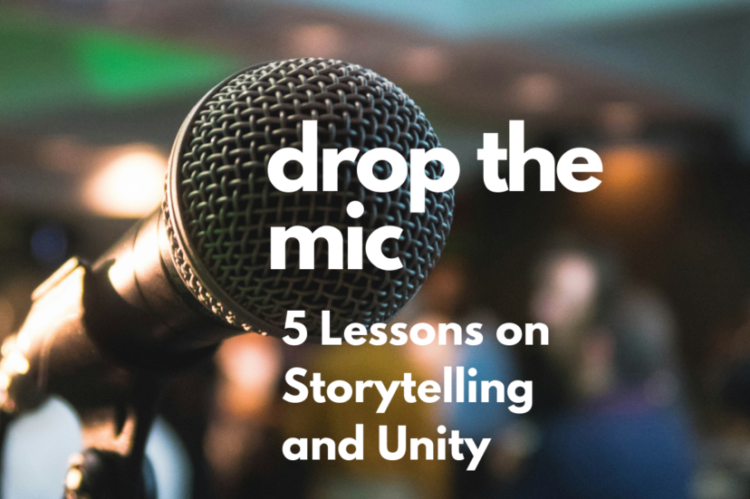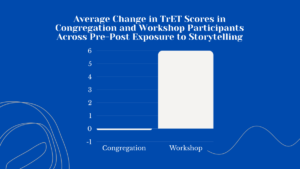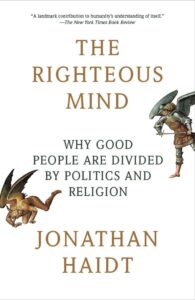Introduction
Imagine a church where people spend less time arguing and more time listening to the stories behind the arguments.
I set out to offer my denomination, The United Methodist Church, an intervention that would bring people together after a painful season of church splintering. The mechanism of the intervention would be a storytelling ministry, and the outcome, I hoped, would be church unity. My hypothesis was a storytelling ministry would increase unity in my church, Faith UMC of Spring, Texas – home of the Simone Biles – as measured by three variables: theological reflection, empathy, and togetherness.
Why theological reflection? Because unity requires thinking theologically about why someone else believes what they believe.
Why empathy? Because unity requires perspective-taking, the proverbial walking a mile in someone’s shoes. For me to take the perspective of someone who left the UMC, first I need to seek out their perspective,[1] because if I don’t seek it out, then I’ll default to a caricature of who I think that person is rather than seeing the person as they actually are. In other words, I can’t walk a mile in your shoes if I never try on your shoes.
Why togetherness? Because unity requires Christians to come together in practice, not in feeling, through the induction of a “common ingroup identity”[2] where members of different groups – in this case, “traditional Christians” and “progressive Christians” – conceive of themselves as members of a single group: the body of Christ.
Intervention
I created a storytelling ministry called Wonders and Signs, named after the wonders and signs done by the apostles in Acts 2:42. Wonders and Signs unfolded in three phases.
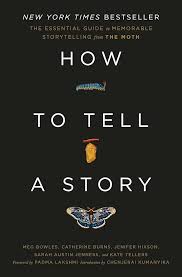
Inspiration for the Wonders and Signs workbook, “How to Tell a Story,” by Kate Tellers, Meg Bowles, Catherine Burns, Jenifer Hixson, Sarah Austin Jenness.
First was the creation of a storytelling workbook. I wrote a workbook called “How to Tell a Faith Story,” which heavily cites a book from The Moth – where I told a story at a StorySLAM in Houston! – titled How to Tell a Story. (I highly recommend the book.)
Second was the implementation of two storytelling workshops where thirteen of my church members practiced telling and listening to faith stories, after completing the workbook in advance.
Third was the telling of faith stories in worship. Five of the thirteen people who participated in the workshops told their faith story on a Sunday morning at Faith in October 2023. I created a survey called the TrET (short for Theological Reflection, Empathy, and Togetherness) to test if storytelling really does increase the three measures of church unity. Two groups of people took the TrET: the participants in the workshops and the worshippers in the congregation who heard the faith stories.
Interpretation
I learned five important lessons from the results of Wonders and Signs.
1. Storytelling leads to unity. Storylistening is not enough.
The telling of faith stories in worship had little to no effect on the people who listened to them. Listening on its own did not induce unity. However, the measures of theological reflection, empathy, and togetherness went up for the people who participated in the storytelling workshops.
If unity is what you want, you have to do more than listen to someone different from you; you have to talk with them. Listening to didn’t bring people together. Talking with did.
2. Unity moves at the speed of tabling.
The workshops were small, intimate gatherings of six or seven people around tables – they looked like house church – while the congregation was hearing faith stories in the sanctuary, a much larger space, told from a microphone – it looked like a concert. I thought the central metaphor of this research would be the microphone, given I was asking people to unite around stories told from the mic. I was wrong. The central metaphor was the table. People united around stories told around a table.
If unity is what you want, you have to move beyond passive hearing to active conversation.
3. Faith needs talking out.
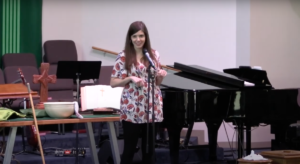
Melissa, a Faith UMC storyteller, telling her faith story in October 2023. Pic from Faith UMC livestream.
There were six questions form the TrET that found Wonders and Signs had an effect on the workshop participants and the congregation. One of the questions was, “I can process my faith story out loud with trusted people.” The people in the congregation, who did not share a faith story, said they could “process their faith out loud with trusted people” better after simply listening to a faith story.
If going deeper in your faith is what you’re going for, then reading the written word can help, but don’t forget about the spoken word in community. Talking out your faith with others can nurture faith in a way that reading can’t.
4. Storytelling can help people get perspective, navigate conflict, and establish in-groups.
The other questions that found Wonders and Signs worked for both workshop participants and the congregation had to do with perspective-taking; the capacity to work through conflict with people who believe differently from you; and the ability for storytelling to establish an in-group, an “us.”
If you want to navigate conflict, then don’t have debates. Tell stories. Ask people to tell stories about why they  care so much about an issue. Hear the story behind the issue you’re dealing with. Then, be brave enough to tell your own story. We make little to no ground trying to reason our way through conflict, so drop the intellectual arguments. Don’t prove a point. Tell a story. Ask people to tell the personal stories that led up to the argument, and tell your story, too.
care so much about an issue. Hear the story behind the issue you’re dealing with. Then, be brave enough to tell your own story. We make little to no ground trying to reason our way through conflict, so drop the intellectual arguments. Don’t prove a point. Tell a story. Ask people to tell the personal stories that led up to the argument, and tell your story, too.
Imagine, what if you replaced town halls, majority votes, YouTube position videos, and – God forbid – another sermon with an afternoon of storytelling around tables about why people care so much about an issue and how they came to their strong and sincere beliefs? And if people don’t want to hear the stories, then maybe that reveals what they cared about all along.
5. The form of speaking drives the level of unity.
I thought church unity would increase when people simply listened to faith stories. I was wrong and now I see why: the form of speaking was wrong. The congregation didn’t hear the faith stories as stories; they heard them as speeches.
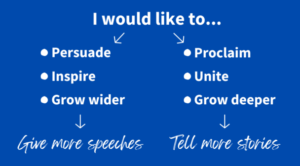 Speeches are great at persuading and inspiring. You give a speech when you want to win an argument and build a following. But stories are great at proclaiming and uniting. You tell a story when you want to tell what happened to you and you want to build community. Speeches drive breadth, stories drive depth. If you want to grow wider, give great speeches. If you want to grow deeper, tell great stories.
Speeches are great at persuading and inspiring. You give a speech when you want to win an argument and build a following. But stories are great at proclaiming and uniting. You tell a story when you want to tell what happened to you and you want to build community. Speeches drive breadth, stories drive depth. If you want to grow wider, give great speeches. If you want to grow deeper, tell great stories.
We need both speeches and stories in the body of Christ. Ecclesiastes 3:1 says “for everything there is a season.” There’s a time for winning theological debates and boosting church attendance. There’s also a time for witnessing to what God is doing in your life and coming together around tables. There’s a time for speech-giving that makes churches bigger, and there’s a time for storytelling that brings churches together. We need both seasons.
The question is, which season does your church need right now? If your church, like mine, needs to navigate conflict together and grow deeper in community, then drop the debates and stop listening to speeches about who has it right, regardless of what “it” is. Pick up the stories behind the debates. The stories were more interesting anyway.
For further (excellent) reading on storytelling and unity:

Tom Long’s Testimony explores testimony as a fundamental source of Christian formation and makes a strong case for why American Christianity needs to reincorporate testimony as a normative worship practice.
Jonathan Haidt’s The Righteous Mind explores the psychological reasons for why we’re so divided on religion and politics.
Christena Cleveland’s Disunity in Christ unpacks why Christians are so divided in the body of Christ as a Ph.D. sociologist and Christian herself.
[1] Tal Eyal, Mary Steffel, and Nicholas Epley, “Perspective Mistaking: Accurately Understanding the Mind of Another Requires Getting Perspective, Not Taking Perspective,” Journal of Personality and Social Psychology 114, no. 4 (April 2018): 547–71, https://doi.org/10.1037/pspa0000115.
[2] Samuel L. Gaertner et al., “The Common Ingroup Identity Model: Recategorization and the Reduction of Intergroup Bias,” European Review of Social Psychology 4, no. 1 (January 1993): 1–26, https://doi.org/10.1080/14792779343000004.
